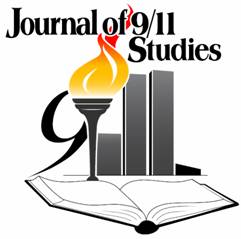Eight Great Reads at the Journal of 9/11 Studies
This summer will mark the ninth anniversary of the Journal of 9/11 Studies. In that time, my co-editors and I have published over 150 peer-reviewed articles and letters addressing various aspects of the 9/11 crimes. Although it can be hard, thankless work, the job of co-editor has also been rewarding and I’ve learned a great deal.
 Through
publishing articles in mainstream journals, I’ve learned that our
peer-review process is at least as rigorous as that of others. At our Journal,
submissions often fail to pass the editor’s initial assessment and are
never reviewed. Of the remainder, dozens have failed to make it through
the peer-review process to become published. It’s definitely a
disappointment when that happens but it’s important that whatever we
publish lives up to certain standards. The end result is a
treasure-trove of reliable research, freely available on the web.
Through
publishing articles in mainstream journals, I’ve learned that our
peer-review process is at least as rigorous as that of others. At our Journal,
submissions often fail to pass the editor’s initial assessment and are
never reviewed. Of the remainder, dozens have failed to make it through
the peer-review process to become published. It’s definitely a
disappointment when that happens but it’s important that whatever we
publish lives up to certain standards. The end result is a
treasure-trove of reliable research, freely available on the web.For example, here are six articles and two letters that should be widely read.
Intersecting Facts and Theories on 9/11, by Joseph P. Firmage
This short article was published in August
2006. It presents a comparison of competing theories for what happened
on 9/11 with respect to known facts. The comparison clearly shows that
the “create a new reality” theory, in which U.S. officials were involved
in the attacks, is by far more sensible than other possibilities.
This highly influential article focuses on
eyewitness testimonies to the World Trade Center (WTC) destruction. The
testimonies were collected by New York City officials after 9/11 and
then kept secret for nearly four years. Professor MacQueen delves into
these explosive eyewitness accounts in a way that makes clear why
officials did not want the public to see them.
This lucid article from January 2008 was a
breakthrough in 9/11 research. Establishing the WTC thermite theory on a
firm grounding of experimental evidence, it set the stage for a series
of scientific articles that were published in multiple journals. In the
future, this breakthrough article may be seen as one of the greatest
contributions to forensic science.
This December 2008 article is from a
professor of philosophy who examined the responses of university
students as they were exposed to alternative explanations for 9/11. In a
five-week segment of his course on Argumentation Theory, Professor
Vorobej was able to lead his students to objectively examine 9/11 from
different perspectives while fostering further, constructive debate.
In March 2010, we published this
examination of the scientific principle of falsifiability in light of
U.S. government reports on the WTC destruction. This often-overlooked
article is well constructed and provides detail on why the official
reports failed to meet some of the most critical requirements of the
scientific method.
A series of nine letters was published on
the tenth anniversary of 9/11. The letters came from leading
researchers, activists, and legal experts around the world. Perhaps the
most compelling contribution was that of Lorie Van Auken, whose husband
Kenneth was killed in the north tower on 9/11.
In June 2012, we published a letter that
was sent from the board of directors of AE911Truth to Paul Nurse,
president of the Royal Society in England. The letter emphasized how the
official account for what happened at the WTC was in direct
contradiction to the laws of motion described by one of the Royal
Society’s most famous members—Sir Isaac Newton.
In May 2014, Swiss historian Daniele
Ganser contributed this updated version of a previously published
article. Dr. Ganser’s article provides important historical perspective
for considering what happened on 9/11. His conclusion, based on
historical fact, is that objections to U.S. government or military
involvement in 9/11 are based on unsupportable, a priori arguments.

No comments:
Post a Comment